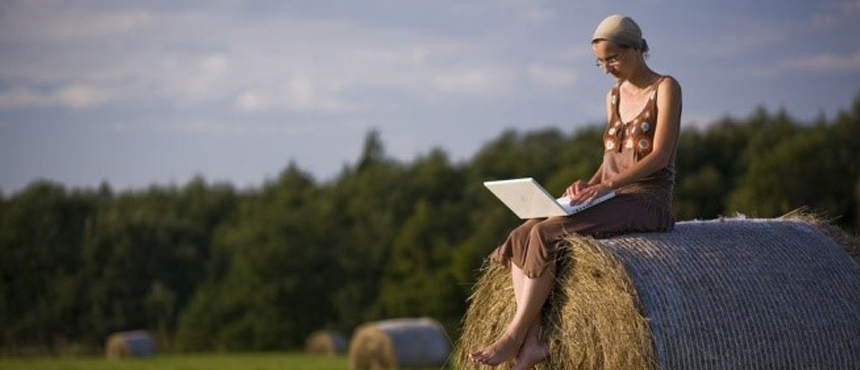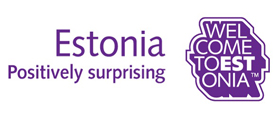Install this application on your home screen for quick and easy access when you’re on the go.
Just tap then “Add to Home Screen”

Estonia is a country of contrasts. Such pristine and untouched nature is found in only a few places in Europe. A few hundred metres off the highway you can find yourself in virgin forest, where wolves, bears, and lynx roam free. At the same time, Estonia is on the vanguard of technological development. They invented the world famous free internet telephone service, Skype, and wireless internet is available everywhere. Estonia combines some of the most important qualities of modern living: free spirit, innovative thinking, untouched nature and rich historical heritage. Find out what you can discover in Estonia on the Visit Estonia website.
The conference will be held at the historic University of Tartu campus, located in the heart of Estonia’s second-largest city. The University of Tartu is one of the oldest universities in Eastern Europe, founded by the Swedish king Gustavus Adolphus in 1632. The city of Tartu is a charming university town whose relaxed and sophisticated atmosphere creates a perfect environment for intellectual discovery and scholarly conversations and Tartu's neoclassical centre is small enough to cover on foot.
The 2016 Graduate Student Conference will organise special opportunities for participants to experience Tartu’s charms: cruises on an early 20th century commercial river bark, visits to handicraft workshops and a tour of Estonia’s largest science and discovery museum. And when the conference is over, there’s no better way to relax than to experience the tranquility of Estonia’s unspoiled nature. Choose from the forests of southern Estonia to the islands of western Estonia, or one of the 40 spas across the country. You can continue to enjoy the fantastic summer days and nights in this special corner of Europe.
Tartu’s Old Town and Town Hall Square
Town Hall Square has been the heart of Tartu for centuries. Its history dates back to ancient times and a wide variety of events are held in the square. Since 1998 the square has also been home to a fountain with a statue of students kissing students, which has become one of the symbols of the city, as the city is renowned for its university. www.tartu.ee
Ahhaa Science Centre & 4D Cinema
The Ahhaa Science Centre is about making science fun through exciting activities and entertaining adventures that test your skills. You are sure to learn something new from its exhibits, the majority of which are hands-on, so you can try things for yourself. www.ahhaa.ee
Toomemägi (Toome hill)
Toomemägi is a heritage site in the Old Town of Tartu where you will find a large number of sculptures and a range of buildings of great architectural value, including the former Dome Church (now the History Museum of the University of Tartu), Tartu Observatory, the Old Anatomicum, the Supreme Court and the Angel and Devil bridges. www.muuseum.ut.ee
St. John’s cultural quarter
The St. John’s cultural quarter in Tartu’s Old Town comprises the medieval St. John’s Church, the Antonius Guild, the Toy Museum, Uppsala House, Tampere House, a museum of 19th century life and a range of art galleries. www.visitestonia.com/en/antonius-courtyard
The buildings of the University of Tartu and the Botanical Gardens
The historical buildings of the university are perfect examples of classicist architecture and are easily one of the most interesting assemblies of 19th century university buildings in Europe for their compact nature. The main building, which embodies the spirit of Greek architecture, along with the buildings at Toome hill have given the Old Town its architectural flavour, and led to Tartu being dubbed the ‘Athens of the Emajõgi River’. www.ut.ee/en
See more about Tartu www.visittartu.com/en
The capital of Estonia is the oldest capital in northern Europe and its 'old town' is one of the best preserved Hanseatic old towns in Europe and is a UNESCO World Heritage Site. Tallinn has an imposing Dome Hill, more than two dozen medieval towers and a centuries-old city wall. Just outside the old town is the city’s bustling commercial centre and the Kadriorg museum district. If you arrive in Estonia via Tallinn, consider staying an extra day in the capital, it’s one of the jewels on the Baltic Sea! Nearly half of Estonia’s population lives in Tallinn, making it an important centre for business, life and transport. Other main cities around the Gulf of Finland, such as Helsinki, Stockholm or St Petersburg, are only a short trip away.
Tallinn attracts lovers of medieval architecture and yet beyond the castle walls is a thriving modern city, covered with wireless internet access and home to luxurious restaurants, hotels and lively nightlife that can compete with anywhere in Europe. An increasing number of people come to enjoy the cultural attractions: opera, dance, music, art exhibitions and museums, especially the Kumu Art Museum (winner of the European Museum of the Year Award in 2008) or the Seaplane Harbour. And if that’s not enough, then there’s the shopping: modern shopping centres exist of course but there’s a lot of fun to be had hunting out bargains and exclusive gifts in the small boutiques and specialist shops that permeate the Old Towns in all Estonian cities. www.visitestonia.com/en/holiday-destinations/city-guides/tallinn-the-capital
For such a small nation, Estonia is astonishing with its diverse and untouched nature. One fact that most vividly speaks for Estonia’s nature is that a quarter of Estonia’s territory is designated as a nature reserve. Estonia might easily be called 'the kingdom of bogs' since approximately one quarter of the country is covered in marshes. From any point on Estonia’s mainland, the nearest marsh is always less than 10km away. One of the most famous and important wetlands is Soomaa with its five marshes, the largest and most prominent of them is the 10,000 hectares of Kuresoo.
The symbol of northern Estonia and perhaps even of all Estonian nature is the high limestone coastal bank with its beautiful waterfalls. The 'Ontika Bank' on Estonia’s northern coast rises at places to 56 metres, and the highest falls in the bank are located in Valaste.
Estonia is more densely covered in meteorite craters than anywhere else in the world. As far as can be determined, six cosmic rocks have fallen on the country’s 45,227 square-kilometre territory. One of them, formed about 7,500 years ago, is the 'Kaali' field of meteorite craters.
In the hill country of southern Estonia, one round-shaped hill follows another, some covered with fields and others with forest or meadow, blue lakes and spectacular valleys in their midst. This idyllic landscape is the 'Karula National Park'.
Estonia is bordered by the Baltic Sea on the north and west. This expanse bulges with large and small islands which number as many as 2,200. Few countries in the world boast such an abundance of islands. The biggest islands are Saaremaa, Hiiumaa, Muhu and Vormsi. Estonia is rich in rivers and lakes. Lakes at least a hectare in size number roughly 1,200. There are more than 7,000 rivers and streams. On Estonia’s eastern border is Europe’s fifth largest lake, lake Peipus (Peipsi).
www.visitestonia.com/en/things-to-see-do/nature-tourism
The versatility of a complete and authentic Estonian life is, in large part, found outside larger cities. Three larger, special regions are especially worthy of mention: Setomaa, Lahemaa, and the islands. In the southeast corner of Estonia is Setomaa, historically an orthodox region and therefore one of the best-preserved representations of its eastern idiosyncrasies, its familiar brand of folk song tradition, a language quite different from northern Estonia’s written language, folk costumes and jewellery art and without a doubt its culinary arts.
Lahemaa National Park on Estonia’s northern coast is known for its wondrous nature, though also in Lahemaa are Estonia’s most imposing manor homes (Palmse, Sagadi, Vihula), which are must-sees for anyone interested in Estonian architecture.
Folk culture in its finest form touches western Estonia’s small islands of Kihnu and Ruhnu. The large islands of Saaremaa, Hiiumaa, Muhu, and Vormsi, differentiate themselves from each other by their pride. Cultural enthusiasts should certainly see Saaremaa’s churches from the Middle Ages, gorgeous windmills, and in the city of Kuressaare, the castle of the Brotherhood of the Sword. Hiiumaa has northern Europe’s oldest lighthouse.
Estonia has been a popular destination for wellness tourism for centuries. The history of the spas and resorts dates back more than 200 years, while the sauna traditions stretch back almost 800 years. As such, Estonians know quite a lot about holidaying for your health, and they know what to offer people to make sure they get the most from their break. Several spas use Estonian peat, mud and mineral water in their treatments, which have healing qualities that have been renowned for hundreds of years.
See more about Tartu: www.visittartu.com/en and Tartu in Your Pocket City Guide
